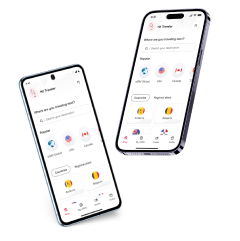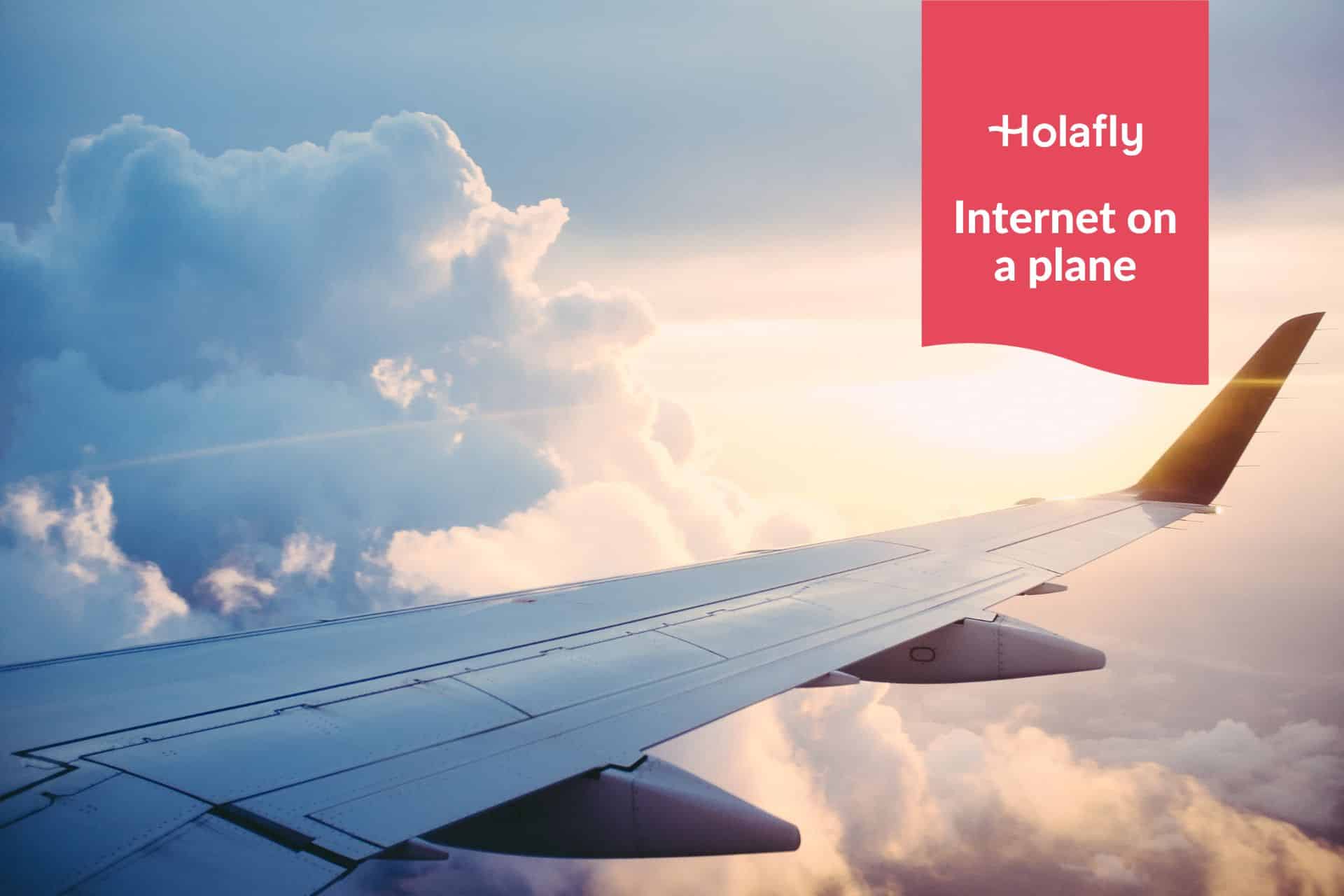Essential business travel tips for frequent flyers
Traveling for work? Discover how you can stay productive on the road with our business travel tips. Learn everything from how to reduce airport check-in time to hacks for scheduling meetings efficiently.
Traveling for work — though it can be exciting — feels a chore if you’re flying out every other month. You’re constantly on the go, juggling meetings and trying to stay on top of things while dealing with airport lines, unpredictable travel delays, and jet lag.
In this guide, we share business travel tips to help you plan productive work trips while still leaving room for some fun and relaxation.
From making the most of your time at the airport to scheduling client meetings and tracking travel expenses, these traveling for work tips can help you manage your schedule efficiently — and free up some time for leisure activities.
1. Choose the right luggage
One of our first tips for business travel is to go for a carry-on bag instead of checked luggage — especially if you fly frequently.
That way, you can bypass the long lines at check-in and baggage claim. Just make sure your luggage meets airline restrictions — approximately 21.5 x 15.7 x 7.9 inches (55x40x20 cm).
We also recommend buying luggage made of high-strength materials like polycarbonate for hard-shell cases or nylon for soft-sided trolleys and backpacks.
For trolleys, pick one with four-spinner, multi-directional wheels — they’re easier to steer, and the smooth movement reduces strain on your wrists.
Some other features that’ll help:
- Piggyback pockets: These pockets allow you to attach smaller bags (like a toiletry bag) to the handle of your trolley.
- TSA-approved locks: This is a must in many countries including the United States and allows security professionals to inspect your luggage without damaging the lock.
- Expandable compartments: This can help you increase storage space when needed — super useful if you plan to take home souvenirs.
Travel backpacks should include a separate tech compartment and offer excellent weight distribution features. Look for things like padded shoulder straps, back panels with ventilation, and adjustable waist belts to evenly distribute the weight and prevent strain on your back and shoulders.
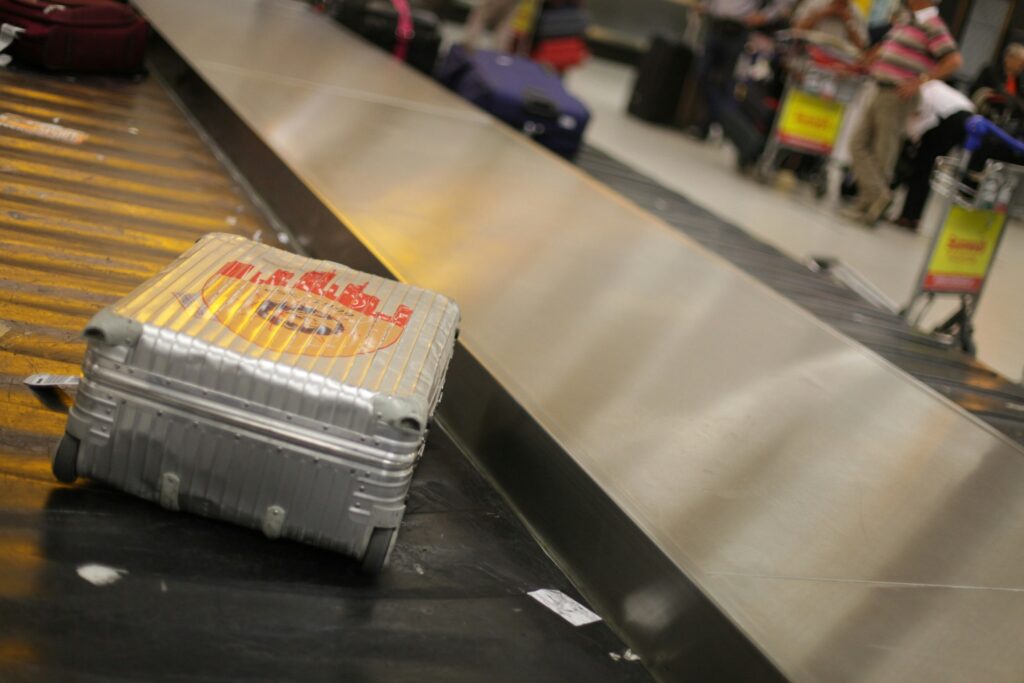
2. Make a business trip packing checklist
If you travel frequently, you likely already know what you need. But to ensure you don’t forget anything, we recommend creating a packing list.
To start, download our free international travel packing checklist and customize it to suit your needs — like adding sections for different travel types (conferences, field marketing, retreats) and weather conditions.
Some other business travel packing tips:
- Use packing cubes to organize your things, maximize space, and keep clothes wrinkle-free.
- Layer your clothing and choose business attire that can be mixed and matched to create multiple outfits so you can pack light.
- Roll your clothes instead of folding them to save space and minimize wrinkles. Similarly, pack vertically instead of laying down your bag or suitcase — use gravity to your advantage to maximize space.
- Pack a wrinkle-release spray so you can smooth out minor wrinkles without using an iron.
- Leave some extra space in your suitcase for those unexpected purchases (if you know, you know).
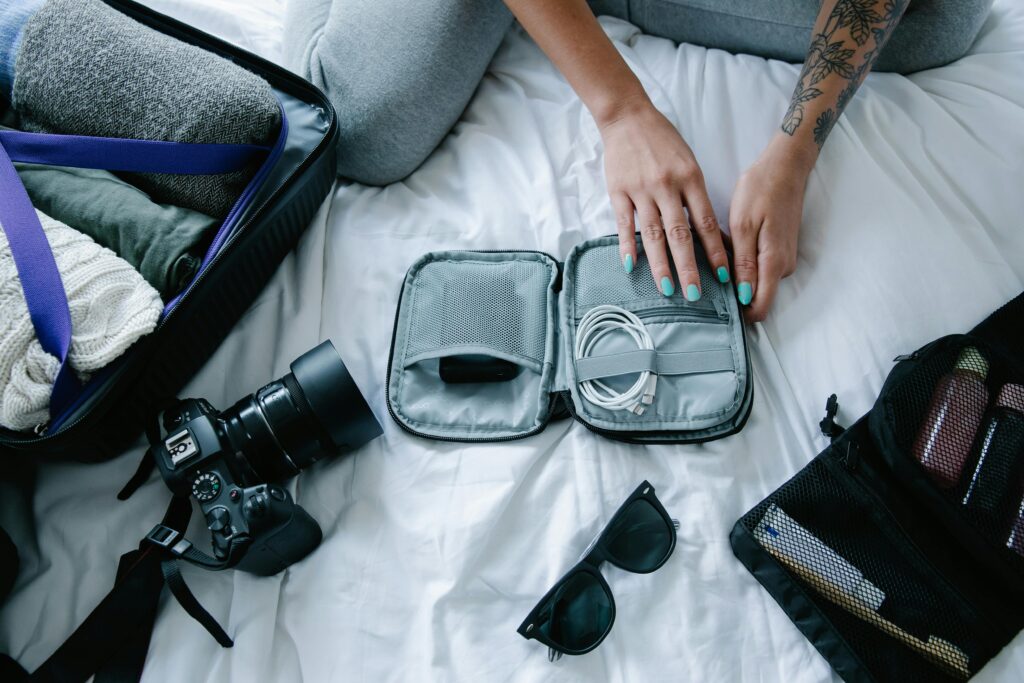
3. Prioritize your schedule
Just as essential as a packing checklist is a well-planned travel itinerary. A detailed plan helps you prepare ahead — whether that’s reading your notes before a client meeting or booking tickets for a networking event.
Some business travel tips to manage your time efficiently:
- Confirm meeting times, locations, and any necessary logistics with all participants in advance.
- Group business meetings within the same area to minimize travel between appointments.
- Familiarize yourself with public transportation options, time zones, and any cultural nuances before your trip — especially important if you’re traveling internationally.
We also recommend shifting virtual meetings in your calendar to your current time zone. This helps you keep on top of when you need to jump on a call, and prevents unnecessary clashes.
Also, minimize office distractions by setting a “Do Not Disturb” or similar status on your team communication channels, mentioning your travel dates and availability.
4. Use technology to stay on track
While a classic pen-and-paper itinerary has its charm, planning apps can be more convenient. For example, work or project management apps like Notion, ClickUp, or Todoist will help manage your travel plans, from creating a packing checklist and keeping track of your appointments to collaborating with colleagues on travel logistics.
Other apps that can help are TimeShifter, which helps you beat jet lag with science-backed tips, and PackPoint, which gives you custom packing lists based on your activities and weather conditions.
Business travel hack: Especially if you’re traveling as a group, use travel management software to manage bookings and reservations, and create a Slack channel (or similar) or a shared project folder to coordinate travel plans.
Just make sure to set internet safety measures — whether using a VPN, setting strong passwords, or enabling multi-factor authentication.
Staying connected during travel is arguably one of the most important tech tips of all, though. With a reliable international data plan — like Holafly eSIM — you’re always connected and ready for work, no matter where you go.
5. Create a mobile workspace
One of our favorite business travel tips for corporate travelers is to create mini-workspaces while on the go. This can be an airport lounge, a coffee shop, a hotel lobby, or even a taxi.
All you need are some essentials:
- Noise-canceling headphones to block out the noise in loud environments.
- A portable charger (or powerbank) to recharge your phone and other gadgets on the go.
- A compact wireless mouse if you plan to work long hours and don’t prefer the laptop’s built-in options.
- A multi-port USB charger so you can charge multiple devices at the same time.
- A portable laptop stand to elevate your screen to eye level and reduce neck and back strain.
For international travel, be sure to pack a universal power adapter, and even more importantly, a global eSIM for reliable internet connectivity.
Top travel eSIM providers — like Holafly — are available in 200+ countries and provide unlimited data over a secure connection. So you don’t have to worry about sensitive business information falling into the wrong hands.
Holafly’s eSIM plans start at $6.90 USD for a per-day plan and the costs go down further when you choose a longer-duration plan.
You can also share 500 MB with another device (like your tablet or laptop) using your personal hotspot. And if you’re traveling to multiple destinations, plans will activate automatically as soon as you land. The best part about eSIMs is that you can always get one no matter where you are. If you’re traveling from Australia, Holafly offers one of the best eSIM for Europe for Australians, making it easy to stay connected throughout your trip.
6. Get through security quickly with TSA PreCheck
Many countries have trusted traveler programs that expedite security and customs processes for frequent travelers.
In the United States, for example, you can use TSA PreCheck to quickly pass through security checkpoints without removing your shoes, jackets, and laptops.
PreCheck is renewed every five years, and all you need to do is complete an online application through the TSA website and pay a non-refundable fee from around $77 USD to $85 USD.
You’ll then be able to set up an in-person appointment to provide fingerprints and identification documents. Once approved, you’ll receive a Known Traveler Number (KTN) to add to your flight reservations.
Another popular program is Global Entry. It costs around $120 and is available for U.S. citizens, U.S. lawful permanent residents, and citizens of 16 countries, including Switzerland, Germany, the United Kingdom, Argentina, India, Colombia, Panama, Singapore, South Korea, and Mexican nationals.
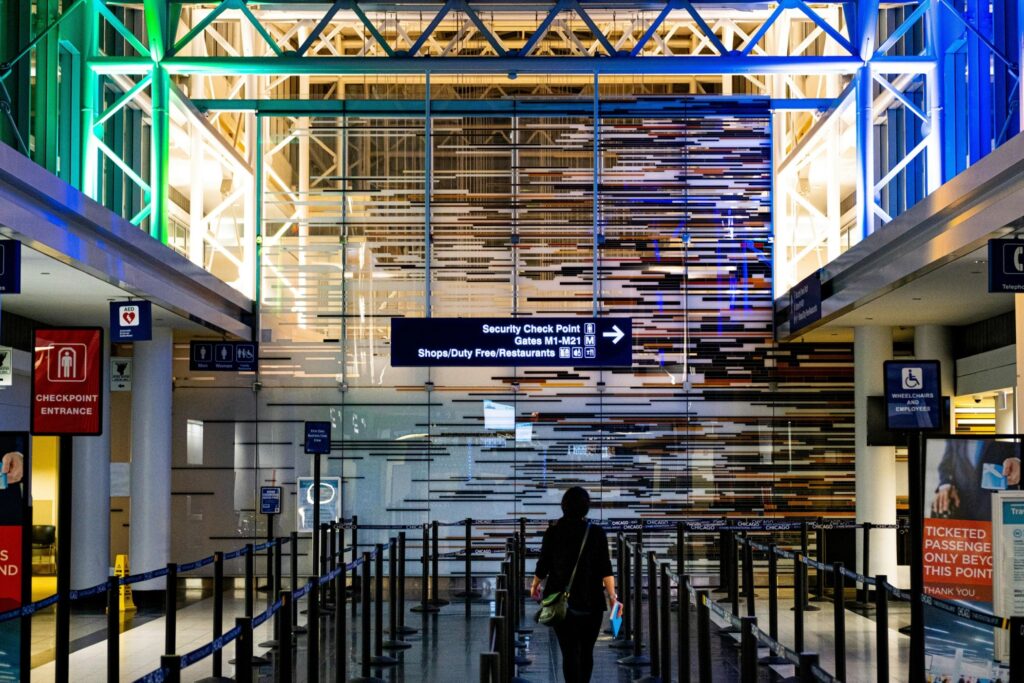
7. Save time with online check-ins
Another tip for saving time at the airport: opt for web (online) check-in. Typically, you can check in online 24 hours before your flight.
You’ll receive a mobile boarding pass, so you don’t need to wait in line at the airport check-in counter at all if you’re only traveling with carry on.
If you have checked baggage you can still check in online, and just head to the baggage drop counter on arrival – saving time standing in line.
You can usually do this by logging into the airline’s website or downloading their mobile app. Online check-in is typically available until 45 minutes before domestic flights and up to 90 minutes for international flights.
During online check-in, you can sometimes even select (or change) your seats, if you’re so inclined (and want the option to recline).
💡 Note: if you have specific food requirements — like vegan or vegetarian — make sure to select your options during reservation or booking. You can’t do this during check-in.
8. Optimize your seat selection
Speaking of reclining, another business travel tip is to choose a comfortable airplane seat so you can rest and prepare for a productive trip.
This usually depends on what you plan to do during your flight — work, sleep, or simply relax.
If you plan to work on the plane, an aisle seat over the wing minimizes turbulence (as it’s close to the plane’s center of gravity) and gives you room to stretch your legs a bit.
A window seat is great if you want to sleep. We suggest avoiding middle seats as they’re generally less comfortable and offer less personal space.
If you have specific needs that aren’t met by free seating options (like extra legroom or a preferred location), consider paying for a better seat at booking.
Sometimes airlines will release better seats closer to departure time though too, if you’d rather wait and see what becomes available.
You can also use services like SeatGuru, which provides detailed seat maps and reviews for specific aircrafts. Simply enter your flight details to identify seats with extra legroom and proximity to the restrooms.
9. Use frequent flyer memberships
Another of our top tips for traveling for work is to sign up for an airline’s frequent flyer program. These are loyalty programs where frequent business travelers can earn points (or miles) based on ticket class and distance flown.
Frequent flyer miles operate on a tiered system — the more points you earn, the better the benefits. Depending on the airline, it can be free flights, seat upgrades, lounge access, and more.
All you have to do is stick to the same airline as often as possible when booking your flight tickets. Sign up for their frequent flyer program and add your frequent flyer number to your reservation to earn points for each flight.
Some airlines also have partnerships with hotels, car rental companies, and credit card providers — you can use those services to collect more points.
10. Organize travel expenses
While some companies provide corporate cards, most require you to submit receipts for reimbursement. An easy way to keep track of spending during your business trip is by using expense-tracking apps like Zoho Expense or Expensify.
These apps help capture receipts, categorize expenses, and automate some of the required paperwork. Just make sure to take photos of your receipts as soon as you get them to avoid losing them.
Making expense tracking a part of your company’s business travel policy minimizes the risk of unauthorized spending, ensures accurate reimbursements, and helps you monitor travel expenditures against budgets so you can forecast better.
Plan productive (and safe) business trips
Finally, some business travel safety tips before you get packing.
Especially when traveling out of your home country, we recommend you research local customs and laws to avoid any unintentional offenses or misunderstandings. If you’re in Singapore, for example, chewing gum is prohibited. (Now you know.)
We also recommend you monitor weather conditions so you know how to pack, and you don’t get stuck in unexpected situations due to weather.
Make sure your phone is always charged and easy to access — and bring a portable charger. You never know when you might need it.
And, of course, don’t forget to set yourself up with a reliable international data plan like a Holafly eSIM, so you’re always connected and ready for work, no matter where you are.





 Language
Language 


















 No results found
No results found


